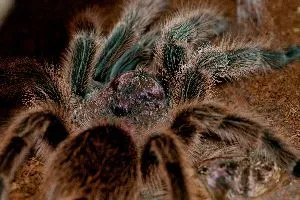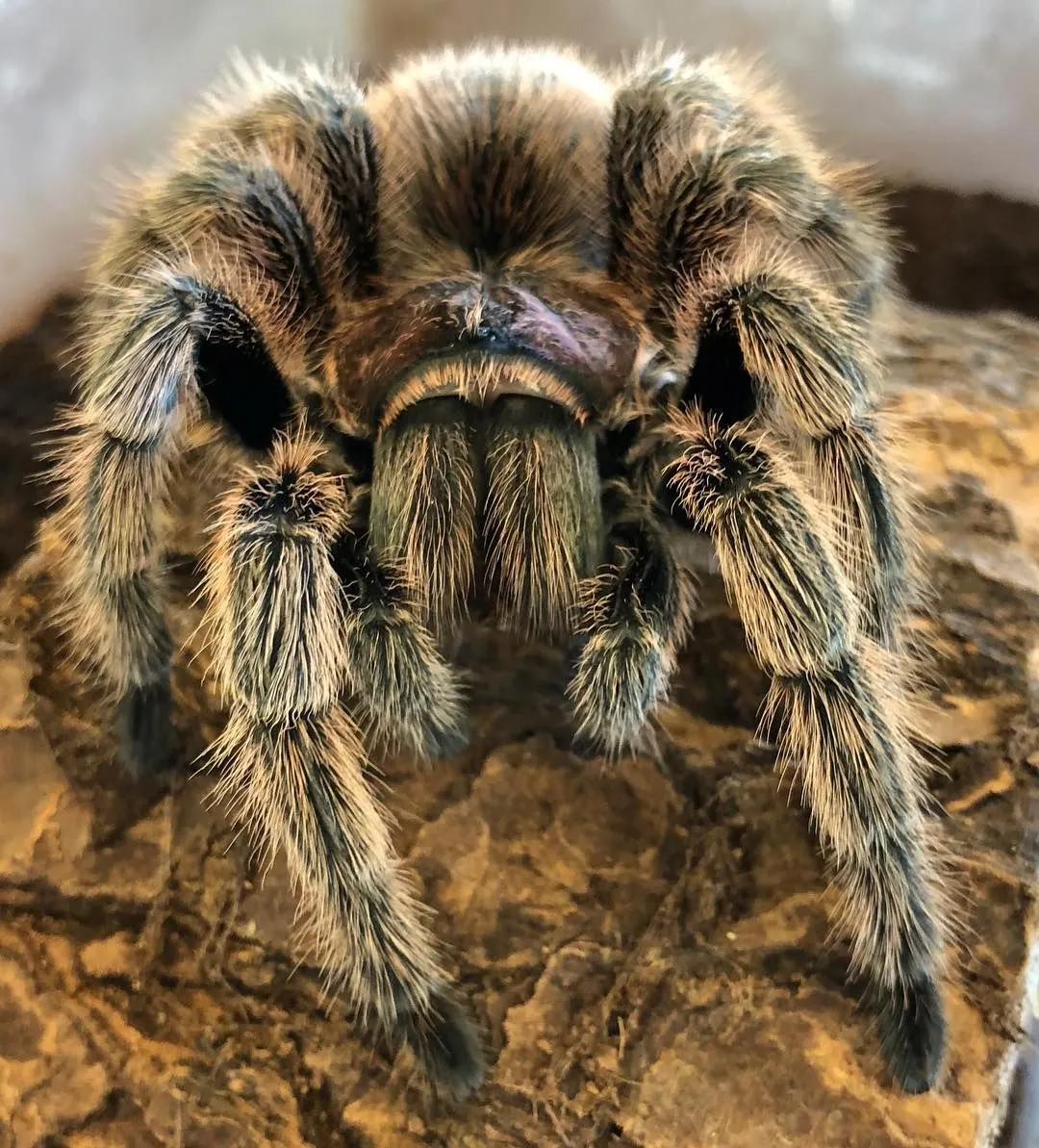What is the Ideal Humidity for a Rose Hair Tarantula
The rose hair tarantula (Grammostola rosea), a popular pet tarantula, originates from the arid regions of South America. Therefore, understanding and replicating their natural habitat’s humidity is crucial for their health and well-being. The ideal humidity range for a rose hair tarantula is generally between 60% and 70%. Maintaining this level of humidity helps ensure the tarantula can molt properly, stay hydrated, and avoid respiratory issues. However, it is essential to avoid excessive humidity, as this can lead to mold growth and other complications within the enclosure. The precise humidity level can fluctuate slightly, depending on the tarantula’s specific needs, the enclosure setup, and the ambient conditions of your home. Careful monitoring is vital to ensure optimal living conditions for your pet.
Importance of Humidity
Humidity plays a pivotal role in the life of a rose hair tarantula. It affects several vital aspects of their health, from molting to overall hydration. Proper humidity supports the tarantula’s ability to shed its exoskeleton successfully. During molting, the tarantula sheds its old skin to grow. If the humidity is too low, the exoskeleton can become too dry and hard, leading to a failed molt, which can be fatal. Furthermore, adequate humidity helps to keep the tarantula hydrated. Tarantulas absorb moisture through their environment and from the water source you provide. Inadequate humidity can lead to dehydration, affecting the tarantula’s overall health and activity levels. Thus, maintaining the right humidity level is critical for their survival.
How Humidity Affects Tarantula Health

Humidity profoundly impacts the overall health of a rose hair tarantula. Low humidity can lead to a range of health problems. Dehydration is a significant concern, causing lethargy, loss of appetite, and even death. Additionally, low humidity can make the tarantula’s exoskeleton overly dry, making molting difficult and dangerous. Conversely, excessively high humidity can also pose health risks. It can foster the growth of mold and bacteria within the enclosure, which can cause respiratory infections and other diseases. The ideal humidity level promotes healthy skin and facilitates efficient molting. It enables the tarantula to breathe comfortably, ensuring optimal oxygen intake. Regular monitoring and adjustments to the enclosure environment are vital to prevent any issues caused by incorrect humidity levels.
Top 5 Humidity Facts for Rose Hair Tarantula
Fact 1 Understanding the Desert Habitat
Rose hair tarantulas naturally inhabit arid and semi-arid environments. These habitats are characterized by relatively low rainfall and moderate humidity levels. Their bodies are well-adapted to these conditions. Understanding this natural habitat is critical to providing appropriate care in captivity. Mimicking the environmental conditions found in their native regions is vital for their health and well-being. This knowledge guides enclosure setup, including substrate choices and ventilation. By recognizing their origins, you can better understand the ideal conditions for these creatures, ensuring they thrive in your care. Providing a suitable environment directly affects their molting process, activity levels, and overall longevity. The enclosure should replicate the natural environment as closely as possible, creating a comfortable and safe home.
Fact 2 The Hydration of Tarantula

Hydration is a cornerstone of rose hair tarantula health. Unlike many other animals, tarantulas absorb moisture through their environment and from their food. They do not drink in the same way humans do. Humidity in the enclosure is therefore a primary source of hydration, and insufficient humidity can lead to dehydration. Provide a shallow water dish with clean water at all times. Regularly monitor the water level and refill as needed. Furthermore, misting the enclosure lightly can also increase humidity. The tarantula might drink water droplets directly. Avoid over-misting, which can elevate humidity beyond safe levels. A well-hydrated tarantula will exhibit good activity levels, healthy skin, and proper molting. Dehydration can lead to lethargy and molting problems, significantly impacting their overall health.
Fact 3 Monitoring Humidity Levels
Accurate monitoring of humidity levels is crucial. Using a hygrometer, a device that measures humidity, is essential to track the conditions within the enclosure. Digital hygrometers offer precise readings and are easy to read. Place the hygrometer inside the enclosure, ensuring it is away from direct water sources, and check the reading regularly. The ideal humidity range is between 60% and 70%. If the humidity falls below this range, adjustments must be made to increase it. Conversely, if the humidity is too high, measures should be taken to reduce it. Recording the humidity levels over time can help you understand any fluctuations and patterns in the enclosure. This information aids in fine-tuning your care routine to maintain optimal conditions for your rose hair tarantula. Regularly checking the readings ensures the habitat remains suitable for your pet.
Fact 4 Substrate Role and Choices
The substrate plays a vital role in regulating humidity. Substrate is the bedding material at the bottom of the enclosure. Choose materials that retain moisture well and support a healthy humidity level. Excellent options include coconut fiber, peat moss, and a mix of the two. Avoid substrates that dry out quickly, as this can make maintaining the correct humidity challenging. The depth of the substrate is also important. A deeper layer can hold more moisture, helping to maintain humidity for a longer period. Regularly misting the substrate helps to maintain humidity. However, avoid saturating the substrate, which can lead to mold growth. The substrate should be replaced every few months to prevent the buildup of waste and maintain a healthy environment. Proper substrate choice and maintenance are critical for the overall well-being of your tarantula.
Fact 5 Humidity and Molting

Molting is a crucial process for rose hair tarantulas, enabling growth and replacing their exoskeleton. Humidity plays a critical role in successful molting. When humidity is too low, the old exoskeleton can become dry and hard, making it difficult for the tarantula to shed. This can lead to a failed molt. During a molt, the tarantula absorbs moisture to loosen its old skin. Ensure humidity levels are optimal, especially during this critical time. Signs of an upcoming molt include the tarantula becoming less active and refusing to eat. Providing the correct humidity can help the tarantula shed its exoskeleton easily and safely. After molting, the new exoskeleton is soft, and the tarantula is vulnerable. Allow adequate time for the exoskeleton to harden before handling the tarantula.
Maintaining Proper Humidity Levels
Using a Hygrometer
Using a hygrometer is a must for monitoring humidity. Place the hygrometer inside the enclosure, away from direct water sources. Choose a digital hygrometer for accurate readings. Check the humidity levels daily to identify any fluctuations. Regularly calibrate the hygrometer to ensure its accuracy. Keep a log of the humidity readings to track trends. This data can help you understand how your actions impact the humidity levels. When the readings are not within the recommended range, take immediate action to adjust the environment. The hygrometer is an essential tool for maintaining the optimal living conditions for your tarantula. Proper monitoring helps prevent health problems caused by incorrect humidity levels. Regularly check your equipment to ensure they work correctly.
Methods to Increase Humidity

Several methods are available to increase humidity. Lightly misting the enclosure with dechlorinated water is a simple and effective method. Use a spray bottle to gently mist the substrate and the sides of the enclosure. Avoid over-misting to prevent mold growth. Another method is to increase the surface area of the water dish. A larger dish provides more surface area for evaporation. Covering a portion of the enclosure’s ventilation can also help trap moisture. However, do not completely block the ventilation, as this can reduce airflow. Adding a layer of moist substrate, such as damp sphagnum moss, is another effective method. Regularly monitor the humidity levels and make adjustments as needed. By combining these methods, you can easily maintain the ideal humidity range for your rose hair tarantula. Ensure a well-ventilated enclosure to prevent the growth of mold.
Methods to Decrease Humidity
If humidity levels are too high, take immediate action to reduce them. Increase ventilation in the enclosure by uncovering some of the ventilation holes. Use a dehumidifier in the room where the enclosure is located. Avoid over-misting the enclosure and allow the substrate to dry slightly between mistings. Change the substrate if it is excessively wet and saturated. Ensure there is sufficient airflow to prevent moisture buildup. Regularly monitor the humidity levels and take necessary actions. By using these methods, you can successfully reduce humidity levels and create a healthier environment for your rose hair tarantula. Controlling humidity is essential for their health, preventing mold growth, and preventing respiratory infections. Combining these techniques with consistent monitoring ensures that your tarantula lives in a favorable habitat.
